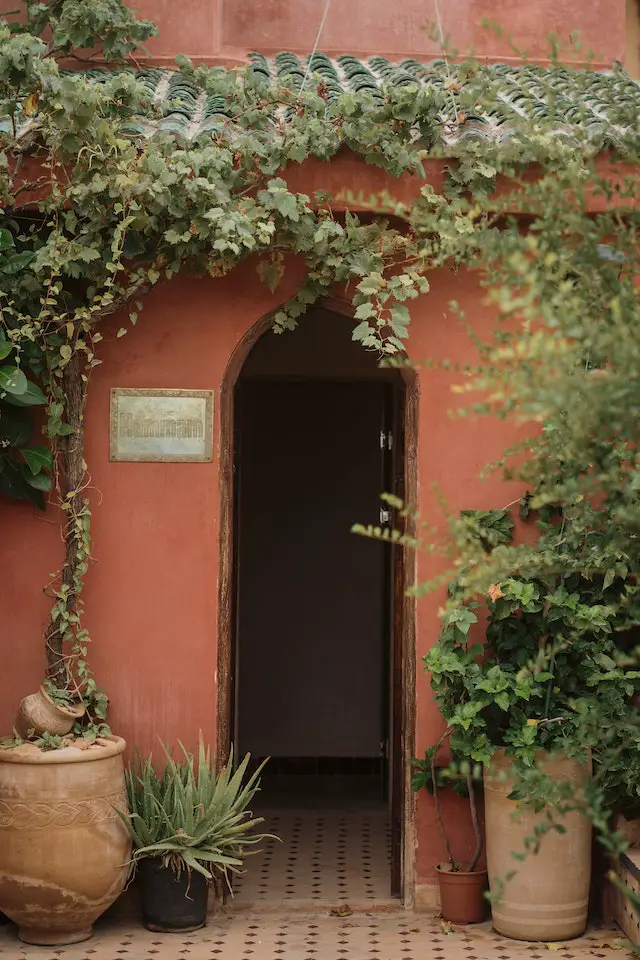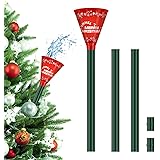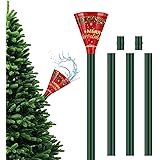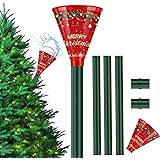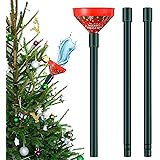Picture this: you gaze out into your once vibrant garden, but something catches your eye. Your beautiful Virginia creeper, once a glorious sight with its cascading foliage, now appears to be withering away. Panic sets in as you wonder, “Why is my Virginia creeper dying?”
Fear not, dear gardener, for we are about to embark on a journey to solve the perplexing case of the fading Virginia creeper.
Unveiling the Culprits: What Kills Virginia Creeper Vines?
Let’s dive straight into the heart of the matter.
Several factors can contribute to the demise of your beloved Virginia creeper vines. It’s time to shed light on the culprits behind this botanical tragedy.
Improper Soil Moisture: A Balancing Act
One possible reason for your Virginia creeper’s decline lies in the delicate balance of soil moisture. While these vines are relatively drought-tolerant, they still require regular watering, especially during dry spells.
However, be cautious of overwatering, as it can suffocate the roots and lead to root rot, ultimately causing the plant to wither away.
Poor Soil Quality: A Foundation for Failure
Another culprit could be the soil quality. Virginia creepers thrive in well-draining soil enriched with organic matter. Inadequate soil drainage or lack of essential nutrients can weaken the plant’s vitality, making it susceptible to diseases and pests.
Therefore, it’s crucial to ensure your Virginia creeper has a healthy foundation to flourish.
Unmasking the Problem: What Is Wrong with My Virginia Creeper?
Now that we’ve explored the potential killers of Virginia creeper vines, let’s narrow down the possibilities to determine what specifically might be plaguing your plant.
Fungal Infections: The Silent Invaders
One of the most common issues faced by Virginia creeper vines is fungal infections. These stealthy culprits can attack the plant, causing its health to deteriorate.
Keep a close eye on the leaves for signs of powdery mildew, a white powdery coating, or leaf spot, which manifests as dark, irregular spots.
Warm and humid conditions, coupled with poor airflow, create an ideal environment for these insidious fungi to thrive.
The Leafy Puzzle: Why Are the Leaves Falling off My Virginia Creeper?
As the drama unfolds, you may have noticed that the leaves of your Virginia creeper are mysteriously dropping.
Fear not, for we shall unravel this leafy puzzle.
Read More: About Why Do Tomato Seedling Leaves Point Up at Night?
Natural Leaf Drop vs. Environmental Stress
Firstly, it’s essential to understand the natural leaf drop of Virginia creepers. During autumn, these vines undergo a seasonal shedding of leaves. However, if leaf drop occurs outside the usual fall season, it may indicate environmental stress.
Extreme temperatures, drought, sudden changes in light exposure, or nutrient deficiencies can prompt the plant to shed its leaves prematurely.
Pests: Uninvited Guests
The presence of pests can also contribute to leaf drop in Virginia creepers. While these vines are generally resilient, they can fall victim to common pests such as aphids, spider mites, or caterpillars.
These unwelcome visitors feast on the plant’s foliage, causing damage and triggering leaf drop.
The Thirsty Vines: Does Virginia Creeper Need a Lot of Water?
As we seek to understand the needs of the Virginia creeper, it’s time to address the question of water.
How much hydration does this vine truly require?
Finding the Right Balance
Virginia creepers are moderately drought-tolerant once established, but they still require regular watering, especially during prolonged dry spells. However, it’s crucial to strike a balance when it comes to watering. Overwatering can be just as harmful as underwatering, as it can lead to root rot and other issues.
Therefore, it’s important to water the vine deeply but infrequently. This allows the roots to receive adequate moisture without becoming waterlogged.
The Resilient Spirit: Can Virginia Creeper Make a Comeback?
Amidst the uncertainty surrounding your struggling Virginia creeper, there is a glimmer of hope. These vines possess a remarkable ability to bounce back from adversity. With the right care and attention, there is a chance for your dying Virginia creeper to make a triumphant comeback.
By addressing the underlying issues and providing optimal growing conditions, you can help your Virginia creeper regain its vitality. Improve soil drainage, ensure proper soil moisture, and enrich the soil with organic matter. Address any fungal infections promptly with appropriate treatments.
Pay attention to the vine’s nutrient needs and provide necessary fertilizers or compost. With time and patience, you may witness the resilience of your Virginia creeper as it emerges stronger and more vibrant than ever.
Read More: About I Forgot to Loosen Root Ball and Now My Plant is Dying
Frequently Asked Questions (FAQ)
Several factors can contribute to the demise of Virginia creeper vines, including improper soil moisture, poor soil quality, fungal infections, extreme environmental conditions, and pest infestations.
The specific problem with your Virginia creeper can vary. It could be related to soil moisture, soil quality, fungal infections, environmental stressors, nutrient deficiencies, or pest infestations. Careful observation and diagnosis are necessary to identify the underlying issue.
Leaves may fall off Virginia creeper vines due to natural seasonal cycles, environmental stressors, nutrient deficiencies, or pest infestations. Determining the cause will help address the issue effectively.
Virginia creeper vines are moderately drought-tolerant but still require regular watering, especially during dry periods. It’s important to find a balance and avoid overwatering, as it can lead to root rot.
Yes, Virginia creeper has the potential to come back and thrive with proper care and attention. By addressing underlying issues, providing optimal growing conditions, and nurturing the plant, you can help it recover.
Virginia creeper can be susceptible to pests such as aphids, spider mites, caterpillars, and scale insects. Regular monitoring and appropriate pest control measures can help protect the plant from infestations.
Conclusion
The mystery of why your Virginia creeper is dying can be disheartening, but with a bit of detective work and the right approach, you can turn the tide. By understanding the factors that can contribute to the decline of these beautiful vines, such as improper soil moisture, poor soil quality, fungal infections, environmental stressors, and pest infestations, you can take steps to address the issues and revive your dying Virginia creeper.
Remember to strike a balance when it comes to watering, provide optimal growing conditions, and be proactive in identifying and treating any fungal infections or pest infestations. With time, care, and a touch of resilience, your Virginia creeper may surprise you with its ability to make a comeback, adorning your garden once again with its lush foliage and vibrant colors.
Auto Amazon Links: No products found.
Perfect Plants Christmas Tree Saver 8oz. | Easy Use Xmas Tree Preserver Food | Have Healthy Green Christmas Trees All Holiday Season
$9.97 (as of December 3, 2025 00:36 GMT +00:00 - More info- Product prices and availability are accurate as of the date/time indicated and are subject to change. Any price and availability information displayed on [relevant Amazon Site(s), as applicable] at the time of purchase will apply to the purchase of this product.
Kaiedos Christmas Tree Watering Funnel - 39 Inch Funnel, Reusable Design, Makes Watering Your Live Tree a Snap!
$14.99 (as of December 3, 2025 00:36 GMT +00:00 - More info- Product prices and availability are accurate as of the date/time indicated and are subject to change. Any price and availability information displayed on [relevant Amazon Site(s), as applicable] at the time of purchase will apply to the purchase of this product.
Christmas Tree Watering Funnel, Real Christmas Tree Water Long Funnel About 40 Inch, Trees Watering System for Water Indoor Outdoor
$15.99 (as of December 3, 2025 00:36 GMT +00:00 - More info- Product prices and availability are accurate as of the date/time indicated and are subject to change. Any price and availability information displayed on [relevant Amazon Site(s), as applicable] at the time of purchase will apply to the purchase of this product.
IPOOLTENG Christmas Tree Watering Funnel 3 Tube 1 Funnels 40 Inch - 3 Section Plastic Christmas Tree Funnel Waterer, Long Funnels for Watering Trees, Best Gifts for Your Parents to Water Tree
$15.53 (as of December 3, 2025 00:36 GMT +00:00 - More info- Product prices and availability are accurate as of the date/time indicated and are subject to change. Any price and availability information displayed on [relevant Amazon Site(s), as applicable] at the time of purchase will apply to the purchase of this product.
1 Pack Christmas Tree Watering Funnel System, 44 Inch Christmas Tree Watering Stick with Adjustable 3-Section Design, Reusable & Spill-Free, Xmas Plant Waterer Tool for Indoor and Outdoor
$16.99 (as of December 3, 2025 00:36 GMT +00:00 - More info- Product prices and availability are accurate as of the date/time indicated and are subject to change. Any price and availability information displayed on [relevant Amazon Site(s), as applicable] at the time of purchase will apply to the purchase of this product.
Cuisinart 6.5" Cast Iron Smashed Burger Press, Round Flat Edge Grill Press for Crispy Smash Burgers, Burger Tool for Grill and Griddle Accessories, for BBQs and Tailgates
$24.99 (as of December 4, 2025 16:51 GMT +00:00 - More info- Product prices and availability are accurate as of the date/time indicated and are subject to change. Any price and availability information displayed on [relevant Amazon Site(s), as applicable] at the time of purchase will apply to the purchase of this product.
Snow Joe Premium Enviro Blend Ice Melt, Green-Coated Deicer Crystals, 50 lb - Safer Melter for Vegetation, Concrete & Metals w/ Anti-Corrosion Calcium Magnesium Acetate
$32.97 (as of December 4, 2025 16:51 GMT +00:00 - More info- Product prices and availability are accurate as of the date/time indicated and are subject to change. Any price and availability information displayed on [relevant Amazon Site(s), as applicable] at the time of purchase will apply to the purchase of this product.
Muddy Mat® Shown on TV Super Absorbent Microfiber Dog Door Mat for Muddy Paws, Non-Slip Washable Pet Rug, Quick Dry Chenille Entryway Carpet, Machine Washable Indoor Outdoor mat, Grey 30"x19"
$19.95 (as of December 4, 2025 16:51 GMT +00:00 - More info- Product prices and availability are accurate as of the date/time indicated and are subject to change. Any price and availability information displayed on [relevant Amazon Site(s), as applicable] at the time of purchase will apply to the purchase of this product.
OLANLY Dog Door Mat for Muddy Paws 30x20, Absorbs Moisture and Dirt, Absorbent Non-Slip Washable Doormat, Quick Dry Chenille Mud Mat for Dogs, Entry Indoor Entryway Carpet for Inside Floor, Grey
$9.99 (as of December 4, 2025 16:51 GMT +00:00 - More info- Product prices and availability are accurate as of the date/time indicated and are subject to change. Any price and availability information displayed on [relevant Amazon Site(s), as applicable] at the time of purchase will apply to the purchase of this product.
Zevo Flying Insect Trap Official Refill Cartridges - Fits Both Zevo Trap & MAX Indoor Fly Trap - Authentic Trap+Lock Technology to Catch Gnats, House & Fruit Flys (4 Official Refill Cartridges)
$14.97 (as of December 4, 2025 16:51 GMT +00:00 - More info- Product prices and availability are accurate as of the date/time indicated and are subject to change. Any price and availability information displayed on [relevant Amazon Site(s), as applicable] at the time of purchase will apply to the purchase of this product.

